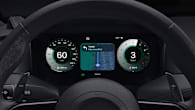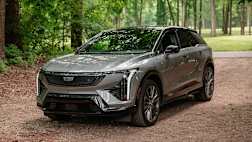Among Australia’s many, many gifts to the world - Rebel Wilson, Tony Abbott, the cork hat, Clive Palmer, Vegemite, Dame Edna - perhaps the most profound, yet sadly unrecognised, is the ute.
And it’s all thanks to the initiative of a woman in country Victoria, a pig farmer, who wanted a car she and her husband could go to church in on Sunday and still use to shift swine on the Monday. So she wrote to Ford and asked them to make one.
An enterprising designer named Lew Bandt received the letter from her in 1932, and, in 1934, came up with what he called the 'Coupe Utility', a vehicle the legendary Henry Ford nicknamed the 'Kangaroo Chaser' when it was first shown in the US.
The ute was born, and it did then spawn the 'pick-up truck' that went on to dominate the roads of America, and has now boomeranged back to us in the shape of vehicles like the Ford Ranger, which we still insist on calling a ute, even though they don't much resemble the Commodore and Falcon-based utes we used to buy.
When it comes to utes - which are now are our favourite type of car - Thailand is way out in front.
Australians still love their utes, indeed you could say we love them more than ever, with the Toyota HiLux being our top-selling vehicle for the past two years, filling the driveways of some 47,093 homes in 2017 alone.
In terms of how Aussie the cars we’re buying are now, however, they’re about as dinkum as a green curry.
Thailand, it turns out, is now the ute capital of the world, and thus increasingly the country where most of the cars on our roads are built.
As far back as July, 2016, Thailand was the number-one source of new vehicles sold in Australia. Nearly 24,000 Thai-built utes were sold here in that month alone, putting its total ahead of all Japanese-built cars in that period.
Japan is normally the number-one source of vehicles we buy, followed by Thailand and then Korea, Germany and the US.
When it comes to utes - which are now are our favourite type of car - however, Thailand is way out in front.
Which utes are Thai take-aways?
Of the big-selling utes sold in Australia, the only one that’s not made in Thailand is the Volkswagen Amarok, which comes from Argentina.
The Thai-built ones include the Toyota HiLux, Ford Ranger, Mazda BT-50, Mitsubishi Triton, Holden Coloroado, Isuzu D-Max and Nissan Navara.
You can also add to that the ute-based SUV models sold here, including Mitsubishi Pajero Sport, Ford Everest, Holden Colorado 7, Toyota Fortuner and the Isuzu MU-X.
The new Mercedes X-Class ute, built on a Nissan Navara platform, will be manufactured in Spain, initially, but if demand is high enough it may eventually also be made in Thailand for our region.
Passenger cars built in Thailand also include the Ford Fiesta, Suzuki Celerio, and Honda’s Civic, Jazz, City, CR-V, and HR-V.
So why are so many utes built in Thailand?
As is often the case when you’re talking about global corporations and manufacturing, it all comes down to money. And a little sprinkling of government policy.
The minimum wage in Thailand is very, very low - try somewhere around $2 an hour in our money - but car companies generously pay those working on their production lines more than that, at a reported $6 an hour, or around $12,500 a year, according to an investigation by news.com.au.
That is, obviously, significantly less than Australian workers were paid to build cars here, before Holden, Ford and Toyota shut down local production.
Some might suggest the move to building more vehicles in Thailand, and importing them here for sale, exacerbated the demise of the Australian car industry, although it would only have been one contributing factor.
What undeniably hastened the change, however, was the Free Trade Agreement the Australian Government signed with Thailand back in 2005, removing any tariffs paid on imports from that country.
In just over 10 years from the ratification of that deal, Australians bought 1,877,446 vehicles built in Thailand.
They obviously get the same tariff-free pricing on cars made here, though, and sure enough Australia did ship some in that direction. Over the same period, we managed to sell them exactly 100 cars, all Ford Territories, back in 2012.
A Ford ability
Ford, in particular, is investing heavily in building vehicles in Thailand.
Back in 2007, in what was seen as a vital boost for our local car industry, Ford announced it would build the Focus hatch in Melbourne. Sadly, two years later the company announced it would build the Focus in Thailand instead, because it was so much cheaper, and thus more profitable, to do so.
Ford now has two factories in Thailand and between them they build almost 500,000 vehicles a year, which are exported to some 130 countries. The company also employs more than 6000 Thais in its factories.
As far as quality goes, there have been some recalls with Thai-built utes, including a combined 69,000 of the Ford Ranger/Mazda BT-50 twins last year when it was revealed they could be starting grass fires, but all factories have recalls at some stage.
And anywhere that makes a truck, sorry, a ute, as tough as the Toyota HiLux must be doing something right.







.jpg)

.jpg)



.jpg)






.jpg)